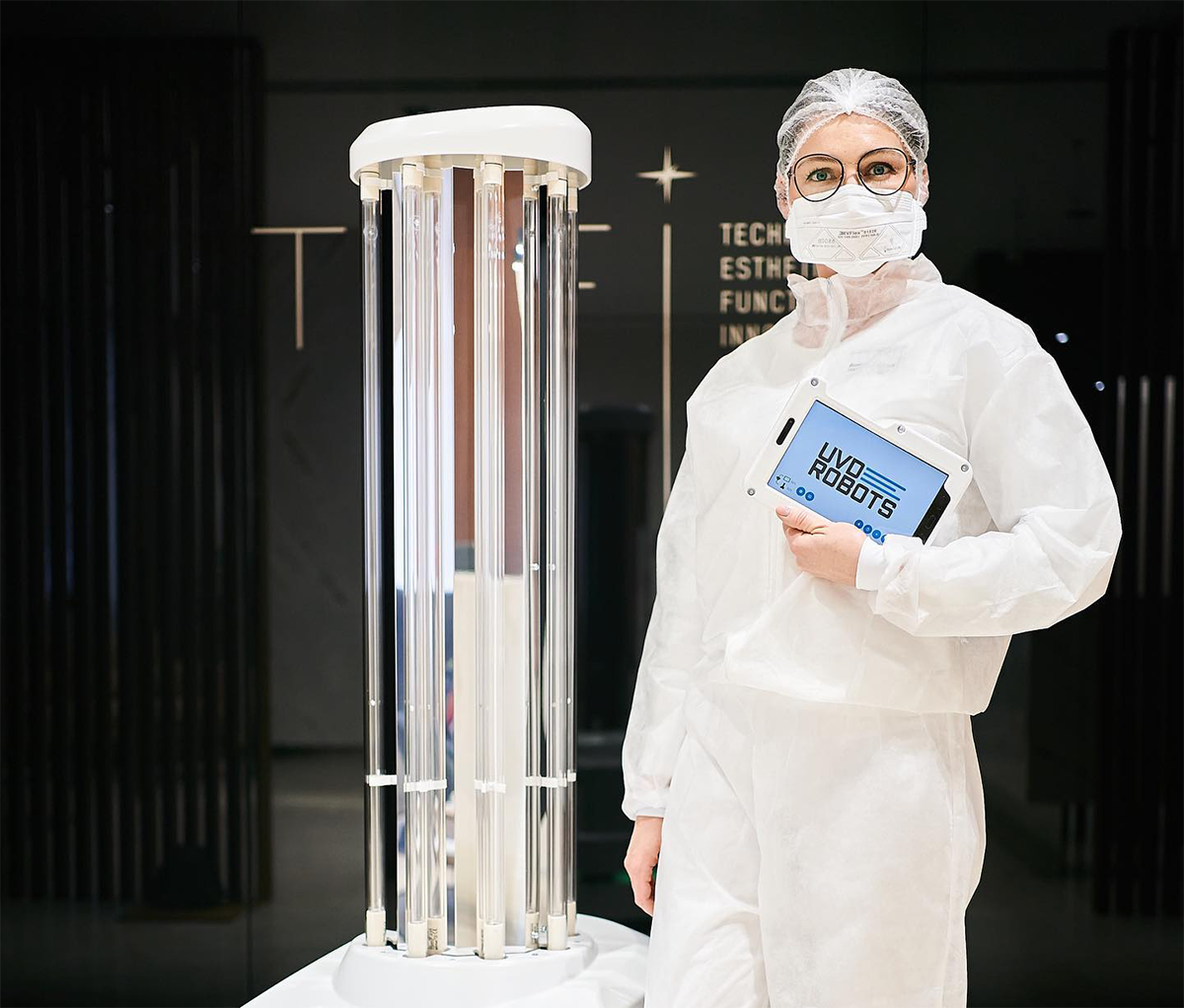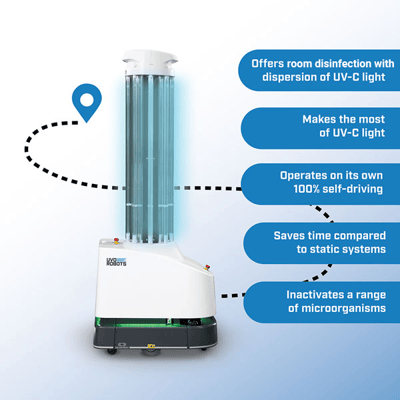Title
Content
Title
Content

Self-driving Ultraviolet C (UV-C) light disinfection combines two innovative technologies. But why is self-driving UV-C light disinfection so effective? Here are the top five reasons.

UVD Robots are a series of mobile robots that use self-driving UV-C disinfection technology - a technology that offers room disinfection.
The UV-C light emitted by UVD Robots has been associated with the inactivation of:
at rates of greater than 3-log to greater than 6-log efficacy, representing reduction rates of 99.9% to greater than 99.9999%.1
UV-C light inactivates microorganisms by disrupting their DNA and RNA repair processes, causing cell death by way of apoptosis.2
UVD Robots use UV-C light at a wavelength of 254 nanometers (nm), a UV-C wavelength associated with the reduction of active microorganisms by 4-log (99.99%) or more.
Self-driving UV-C disinfection technology like UVD Robots are known for their self-navigating capabilities - that is, the ability to operate through rooms with minimal assistance.
UVD Robots can move autonomously through different areas once their environments have been mapped. This saves operators the work of manually controlling or directing them.
Self-driving UV-C disinfection methods tend to take less time than those that involve static UV machines or chemical treatments, thus improving the operational efficiency of the facility management team. Static systems can take as long as 15 to 45 minutes to achieve disinfection.
UVD Robots, in contrast, have been associated with 3-log or greater reductions (≥ 99.9%) of selected microorganisms in durations as fast as under 10 minutes.3 This is a marked difference in disinfection time, without the use of chemicals or manual movement.
Self-driving mobility helps UVD Robots reduce limitations posed by:
when disinfecting areas with UV-C light. Compared to static systems, mobility has been found to increase coverage by 35%.
In all, self-driving mobile UV-C light technology is a quite effective method for environmental disinfection. UVD Robots offer self-driving mobile UV-C disinfection solutions that operate to high degrees of efficacy and efficiency, elevating the quality of indoor environmental hygiene.
3. Andersen, Helle Stendahl. Analysis Report: Test of UV Disinfection Robot acc. NF T72-281. Report Number 754372_Rev. 2. Danish Technological Institute, 2020.
5. 17, August. “How Does Ultraviolet Light Kill Cells?” Scientific American, 17 Aug. 1998, www.scientificamerican.com/article/how-does-ultraviolet-ligh/. .
10. Andersen, Helle Stendahl. Analysis Report: Test of UV Disinfection Robot acc. NF T72-281. Report Number 754372_Rev. 2. Danish Technological Institute, 2020.